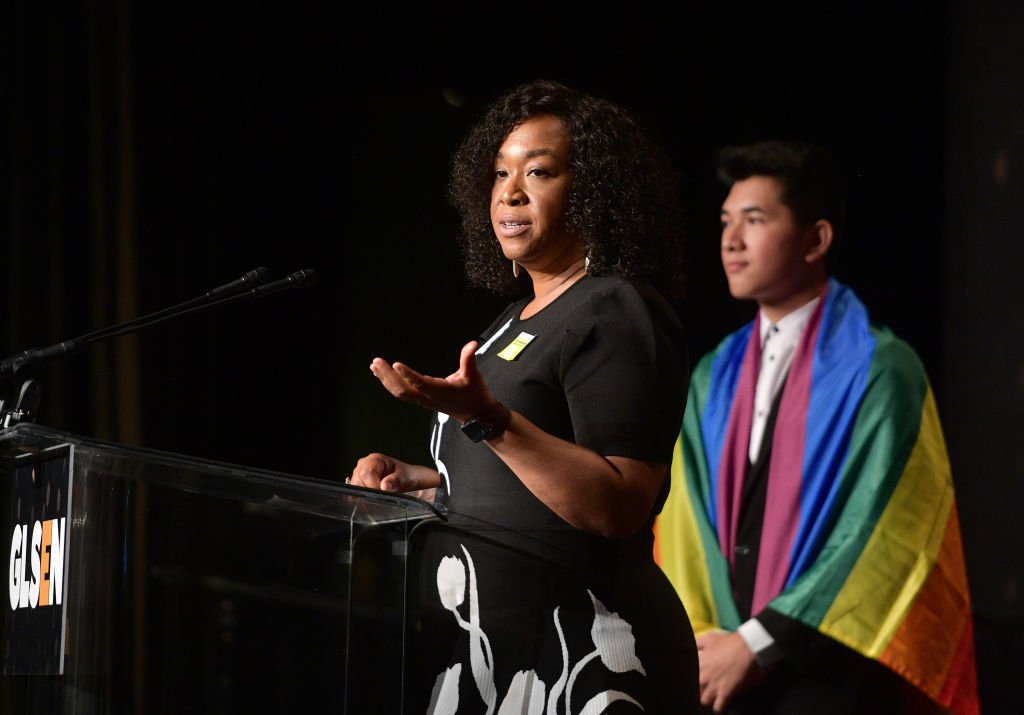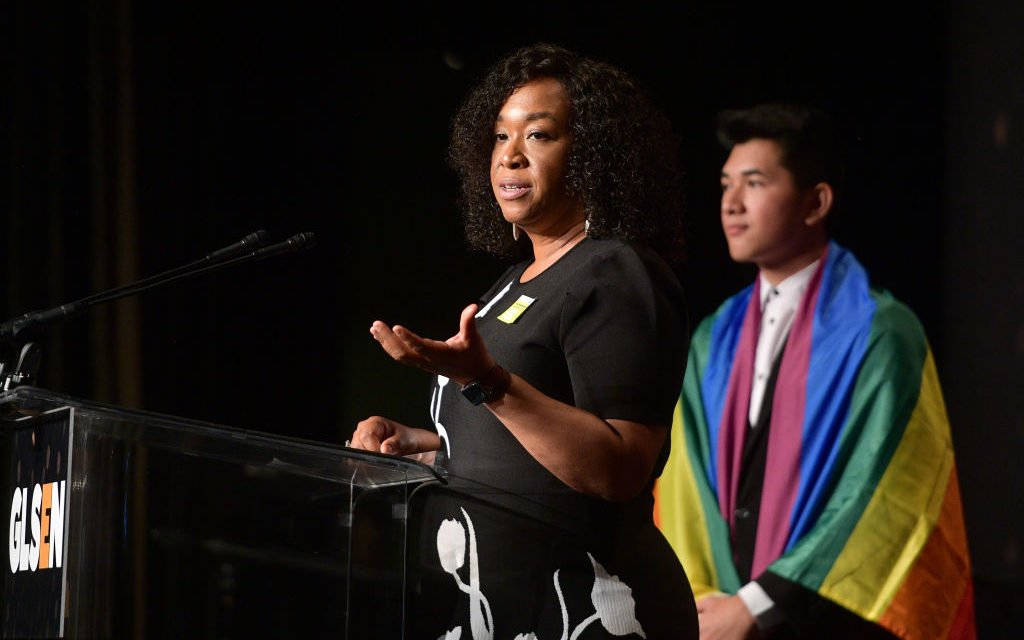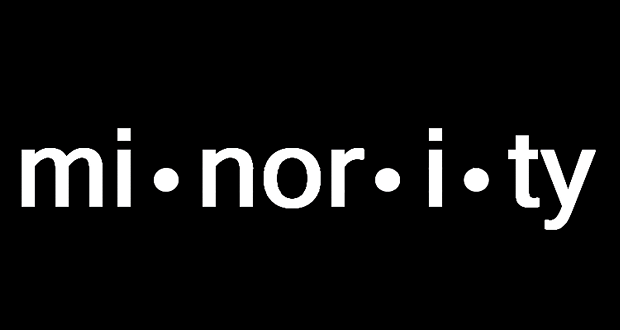
One of my favorite quotes about inclusion in the entertainment industry is from Grey’s Anatomy and Scandal creator Shonda Rhimes. In her book Year of Yes: How to Dance It Out, Stand in the Sun and Be Your Own Person, the longtime showrunner writes: “The goal is that everyone should get to turn on the TV and see someone who looks like them and loves like them. And just as important, everyone should turn on the TV and see someone who doesn’t look like them and love like them. Because perhaps then they will learn from them.”
While I couldn’t agree more, the sobering truth is we have a long way to go when it comes to equitable representation on our screens — and progress can’t just rest on the shoulders of the few creatives of color in powerhouse positions such as Rhimes, Tyler Perry, Kenya Barris, Mindy Kaling, Lena Waithe, and Michaela Coel, who along with their peers, currently provide the bulk of opportunities for BIPOC talent. Allies also have to step up to do their part and the industry as a whole must organize to ensure accountability.
We have a long way to go when it comes to equitable representation on our screens — and progress can’t just rest on the shoulders of the few creatives of color in powerhouse positions. Click To TweetAccording to a 2021 report on Black representation in the film and TV industry from McKinsey & Company, the executives calling the shots in Hollywood are overwhelmingly white at 92 percent of all film heads and 87 percent of TV execs (leadership in the film industry is actually less diverse than the energy, finance, and transportation sectors, according to McKinsey). This despite the latest census numbers pointing toward our country’s increasing diversity and the growing awareness of the damage to our collective consciousness when white gatekeepers control the narratives of people of color.
In a recent article examining the short history of Black representation on TV from The Atlantic, Black producer and screenwriter Felicia D. Henderson, a veteran of popular shows including Family Matters and The Fresh Prince of Bel-Air, discusses the concept of “negotiated authenticity,” which she describes as “… white people determining what the Black experience is and then hiring Black writers to ‘authenticate’ it.” It’s essentially perpetuating a type of Blackness deemed acceptable by the white executives in charge, which both denies Black creators the ability to express their full humanity and also denies audiences the opportunity to really get to know the Black experience and relate to it. The same can be said of all underrepresented groups in TV and film — we miss out on the full story when the storytelling is controlled by a dominant perspective.
The same can be said of all underrepresented groups in TV and film — we miss out on the full story when the storytelling is controlled by a dominant perspective. Click To Tweet“When we’re still telling stories that are so focused on trauma, we’re actually still telling stories about white supremacy,” says Tara Duncan, president of Disney’s Freeform cable network, in The Atlantic article. Even a breakout star such as Issa Rae of Insecure fame, who is also referenced in The Atlantic, confesses to wrestling with being “deathly afraid of losing an opportunity by being a bit too authentic.” However, authenticity is precisely what makes Rae’s successful HBO show resonate with a wide audience: In 2017, Nielsen reported that 61% of Insecure’s viewership was non-Black.
So, where do we go from here? Research from organizations such as McKinsey, Nielsen, UCLA, the Think Tank for Inclusion & Equity, and others provide compelling quantitative and qualitative data points for driving increased representation in TV and film. Among some of the recommendations:
- Remove barriers to hiring. Given what we know about the racial wealth gap, it stands to reason that an industry infamous for starting workers at little or no pay would rule out a large swath of Black creators, who are at a disadvantage due to the historic lack of inherited wealth and connections. On top of that, almost 60 percent of the Black workforce is concentrated in the South, according to McKinsey, making hiring creative talent solely from places like Los Angeles and New York prohibitive. By paying a living wage to interns on up and recruiting talent from other parts of the country, we could make major strides toward seeing more people of color and greater authenticity on screen in this billion-dollar industry.
- Remove barriers to advancement. A recent study from the Society for Human Resource Management, Harvard Business Review Analytic Services, and Trusaic found that the organizations that are considered leaders in DEI work are four times more likely to track equity in development and feedback, and also recognition and praise. These key factors involve things like targeted mentoring and training and are essential to helping BIPOC creators move up to crucial decision-making roles in the industry. And as new research in the Academy of Management Journal points to, amplifying or lifting up others (underrepresented voices, in this case) has the effect of benefiting both the person being endorsed and the person amplifying the message, making the call to allyship a win-win for all.
- Mandate training. According to the McKinsey findings, a lack of diversity among executives, marketing teams, and other key decision makers contributes to widespread misconceptions about the marketability of Black content, which in turn affects which projects get financed and promoted. As a Black executive shared with McKinsey, “Marketing teams need to be on board to select a film, but if they don’t feel comfortable with the story, it limits the number of buys.” Additionally, “when executives feel like they can’t personally relate to your content, they don’t bid.” To bridge the divide in a heavily white industry, management training covering topics such as implicit bias, anti-racism, and cultural competence should be mandated for all gatekeepers, from head writers and showrunners to directors, producers, and executives.
- Hold executives accountable. With no less than an additional $10 billion in revenue on the table, it is no wonder McKinsey recommends the creation of an independent organization to oversee the promotion of diversity in film and TV. In the meantime, other accountability measures can be implemented, from publicly releasing DEI stats for full transparency, to tying executive bonuses directly to DEI outcomes. With demand for shows where at least 40 percent of the cast is diverse doubling in the last few years, according to a recent study from Creative Artists Agency and Parrot Analytics, investing in transformation by addressing deeply ingrained racial inequities capitalizes on a financial opportunity that has the potential to usher in a new era of representative entertainment — and possibly reshape the way we all view race.
To this list I would add educating ourselves on the range of stories out there. A good place to start is by reading through the Think Tank for Inclusion & Equity’s incredibly useful #WriteInclusion Factsheets, which are targeted to TV writers but are also relevant to anyone who creates or consumes content and wants to be an effective ally to people from all walks of life. Armed with this information, we can all better recognize harmful stereotypes when we see them and champion the authentic stories that benefit all of us when they are amplified.


















